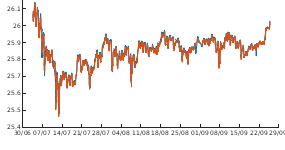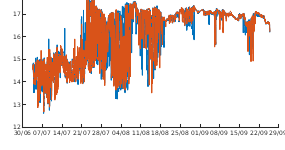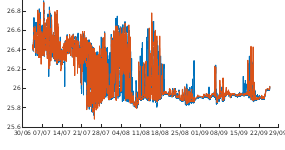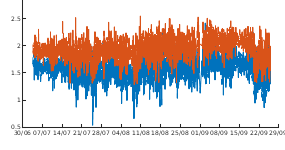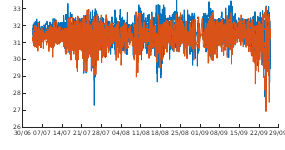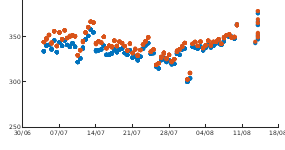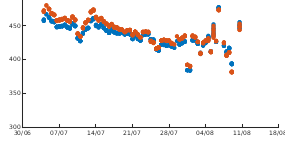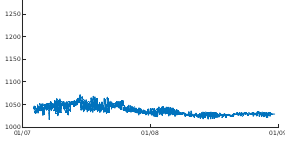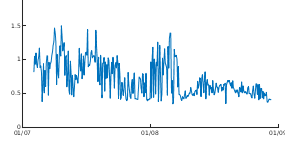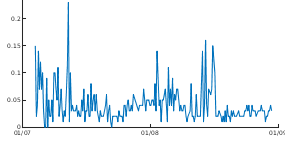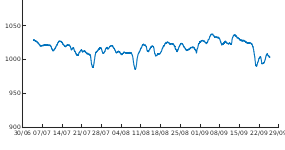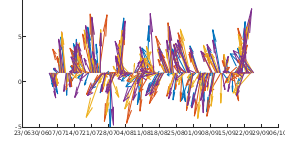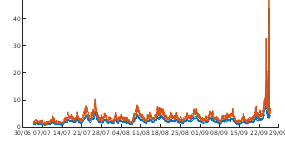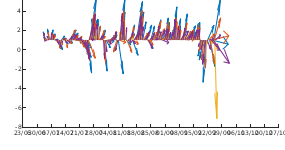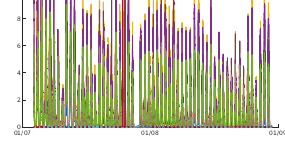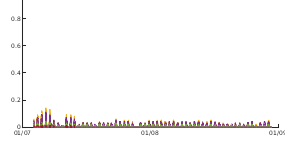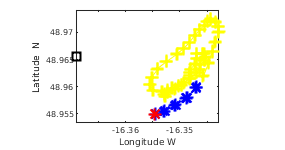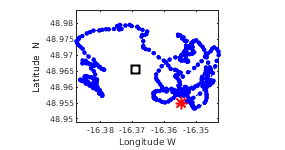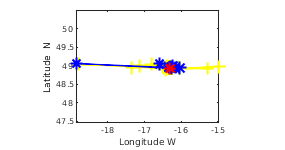The July 2019 mooring was deployed on cruise DY103.
Near-real time data were transmitted via iridium servers until September 2019, when severe weather appears to have damaged the transmission system.
It is hoped that on-board recording is still active.
The near-real time data collected to this point are shown in the graphs below.
Click on an image to see a larger version of each graph.
In October 2020, the bouy came adrift during Hurricane Epsilon, shortly before cruise DY116 was due to recover the mooring. The buoy was recovered by the FS Maria S. Merian and DY116 will continue to recover the hub and benthic sampling equipment.
After recovery, data will be archived at the British Oceanographic Data Centre (BODC) and can be accessed at: BODC PAP Collection. Please use the search term Porcupine or #5192 to find our data.

Oceanographic instruments on keel and at 30m on frame, operating in near real time
Keel Mounted Microcats
Frame Mounted Microcats
Microcat Pressure
Oxygen
Carbon Dioxide
Chlorophyll-a
Nutrients
pH data
Satlantic pH
MetOffice UK Meteorological Data
PAP is part of the MetOffice network of weather buoys, click here to view the full network.
Seafloor (4800 m)
Seafloor samples have been taken at the PAP site for over 20 years. Many methods can only be achieved from research ships but some (time-lapse camera) is autonomous for high resolution long-term sampling.
| Method | Used for | Contact at NOCS, UK |
|---|---|---|
| Trawls | Megafauna (Species diversity, abundance and biomass | Prof. Andrew Gooday |
| WASP | Wide-Angle Seabed Photography towed camera system | Dr Brian Bett |
| Cores | Boxcores, Mega- and Multicores for fauna and geochemistry | Prof. Andrew Gooday |
| Bathysnap | Time-lapse photography | Dr Brian Bett |


